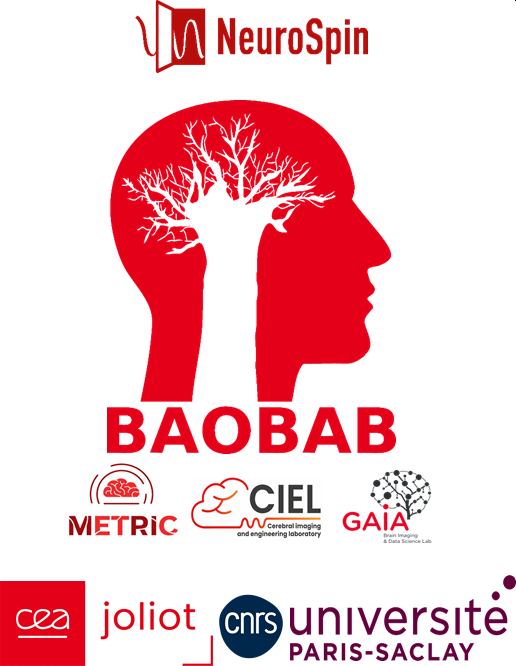The BAOBAB UMR is the methodological
backbone of the NeuroSpin large-scale imaging facility, supporting the R&D
necessary for cutting-edge MRI technology.
Physicists and computer scientists at BAOBAB develop solutions that fully
leverage the capabilities of the available instruments—most notably, the jewel
of the NeuroSpin platform: the ISEULT MRI scanner, featuring a world-record
11.7T magnet designed by CEA physicists who also oversee magnet development at
CERN.
Other instruments at NeuroSpin serve
multiple purposes for BAOBAB teams, from identifying the technical challenges
of increasing magnetic field strength to creating innovative solutions to
overcome them. BAOBAB researchers also use these tools to develop novel
biomarkers for better understanding both normal and pathological brain
function.
BAOBAB also plays a major role in the
national CATI platform, a distributed neuroimaging
infrastructure across France that standardizes image acquisition protocols for
clinical research using around a hundred conventional MRI scanners. Founded in
2010 by J.-F. Mangin as part of the French Alzheimer Plan, CATI became a
permanent service unit in 2022 (US52-UAR2031), operating under the umbrella of
CEA, INSERM, CNRS, AP-HP, Sorbonne University, and the Paris Brain Institute
(ICM).
This dual involvement significantly shapes
BAOBAB’s research priorities, allowing the unit to combine the two major
strategies in neuroscience imaging: deep phenotyping, enabled by
exceptional instruments like those at NeuroSpin, and broad phenotyping,
driven by large-scale cohorts and recent advances in artificial intelligence
for data analysis.
Now, let’s discover in depth the activities of the different BAOBAB teams...
